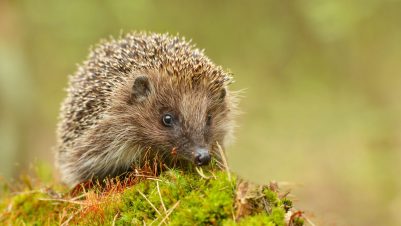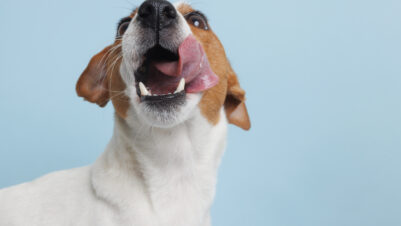It’s easy to judge the quality of life being experienced by humans – we are very good at self-reporting how we are doing in our current surroundings. But when it comes to the non-human animal, we have to rely on inferences based on the behaviours they perform and on their demeanour. As such, an understanding of the normal behaviour pattern of many domestic and exotic species seen by vets, vet nurses and other animal health professionals is vital to determining the animal’s overall welfare state and its quality of life.
Behaviour is defined by the observable actions that an individual performs in response to a stimulus from the external or internal environment. For example, this could be the detection of a climatic change causing movement or migration to new areas, or it could be a physiological signal such as the release of sex hormones that bring an individual into breeding condition. Based on these observable responses, we can create a picture of what animals do and when they should do them – are there behaviours that they perform that are integral to their life history and evolutionary history?
Behaviours can convey fitness benefits to the individual, promote traits that prolong survival and increase reproductive potential within an animal’s environment. The performance of some behaviours can also come with a high motivational value – there is an internal drive or need to express energy in the form of a specific action or set of actions, for example, the need for domestic hens to dust-bathe or build their own nests.
This provides us with a strong foundation for how we determine the welfare state of an individual animal. Welfare is not something that you have; it is something that you experience, which can go from positive to negative, and vice versa. Welfare can be defined as “the state of an individual as it attempts to cope with its environment” (Broom, 1986) and we can use a range of resource-based (eg the provision of food, water and the correct type of environment) and animal-based (eg health, expressions and positive behavioural indicators) to explain the current welfare state the animal is in.
The state of the individual will be influenced by a range of factors that the animal cannot or cannot attempt to cope with. For example, is the animal experiencing an acute or short-term level of discomfort from its environment that internal physiological or external behavioural change can rectify? Or is the individual unable to cope with a chronic or long-lasting stressor that changes to behaviour and physiology are failing to alleviate?
Stress is a natural and biologically relevant change to homeostasis that promotes survival. We know now that positive stressors, which promote “eustress” (beneficial stress and physiological challenge) improve the behaviour patterns of captive animals and can convey health benefits. It is when stress become a state of distress, a failure to cope with the stressor, that the animal’s welfare state is compromised.
Behaviour and rumination
Let’s consider a behaviour integral to physiological and psychological health in many species of common domestic livestock – rumination. The act of ruminating not only enables the sheep, cow or goat to digest grass and forage more efficiently, it also provides an opportunity for positive psychological states.
In sheep, it has been demonstrated that decreased opportunities to ruminate disrupt patterns of non-REM sleep. Such a reduction in sleep quality, caused by reduced overnight rumen fill to provide cud to chew on, will impact on the quality of life of the individual. Rumination is promoted by a forage intake that is high in structural fibre. Ruminating therefore occupies the animal for long periods of time, hence opportunities to consume foods that promote rumination reduce an individual’s likelihood of performing abnormal repetitive behaviours (often referred to as “stereotypies”). These stereotypies, such as tongue-playing, licking or chewing, are commonly seen in ruminants that are fed on concentrate feed-heavy diets with limited ad lib access to forage or grazing. Hence the enhanced performance of these “unnatural” behaviours provides an insight into the animal’s welfare state within that setting and an inference of its quality of life.
Assessing time-activity budgets
When assessing time-activity budgets (the amount of time that an animal spends on key state behaviours), time equates to energy. The more time spent, the more energy expended on the behaviour (Figure 1); therefore, the higher the motivation within the animal to perform this action.
When time budgets are made up of stereotypic behaviours, the underlying cause or reason behind why the animal is expending energy on a potentially negative action can be investigated. Is this because of diet (as per the rumination example)? Is it due to restriction on space or stimulation? Is it because of an inappropriate or unstable social group? It is important that an animal is never physically prevented from performing a stereotypic behaviour. You enable the animal to outcompete this stereotypic part of its behavioural routine by provision of resources or environmental change which promote normal or natural behaviour patterns.
In the example shown in Figure 1, foraging and ruminating make up the largest proportion of the baseline activity budget, with reduced time available for foraging and rumination on the low forage diet, and a more naturalistic behavioural profile seen for animals provided with a higher forage to concentrate ratio. The behavioural indicator of welfare (oral stereotypy) is absent in wild animals and significantly reduced in the higher forage group, therefore providing evidence of an improvement in welfare state with a change in husbandry style, complete with evidence from wild animals to show what time budget to try to aim for in a managed population.
It is important to consider other reasons why welfare-positive behaviours are reduced in performance, and therefore knowledge of the individual is key. Such a reduction could be due to normal physiological change (eg oestrous reduces rumination time in dairy cows) or it could be caused by ill health (lame dairy cattle take fewer bites when grazing compared to non-lame cows). We can gain understanding of how animals are coping emotionally (what they are feeling) by using descriptors of the outward signs of their emotions.
Animal keepers are very good at knowing their stock individually and have an instinctive feel for when the personality or normal demeanour of one of their animals changes (ie it becomes withdrawn, or apathetic, or is suddenly more excited). This qualitative approach helps identify the welfare state of all individuals within a population and picks up the variation that each individual will inherently possess when it attempts to cope with the environment around it.










